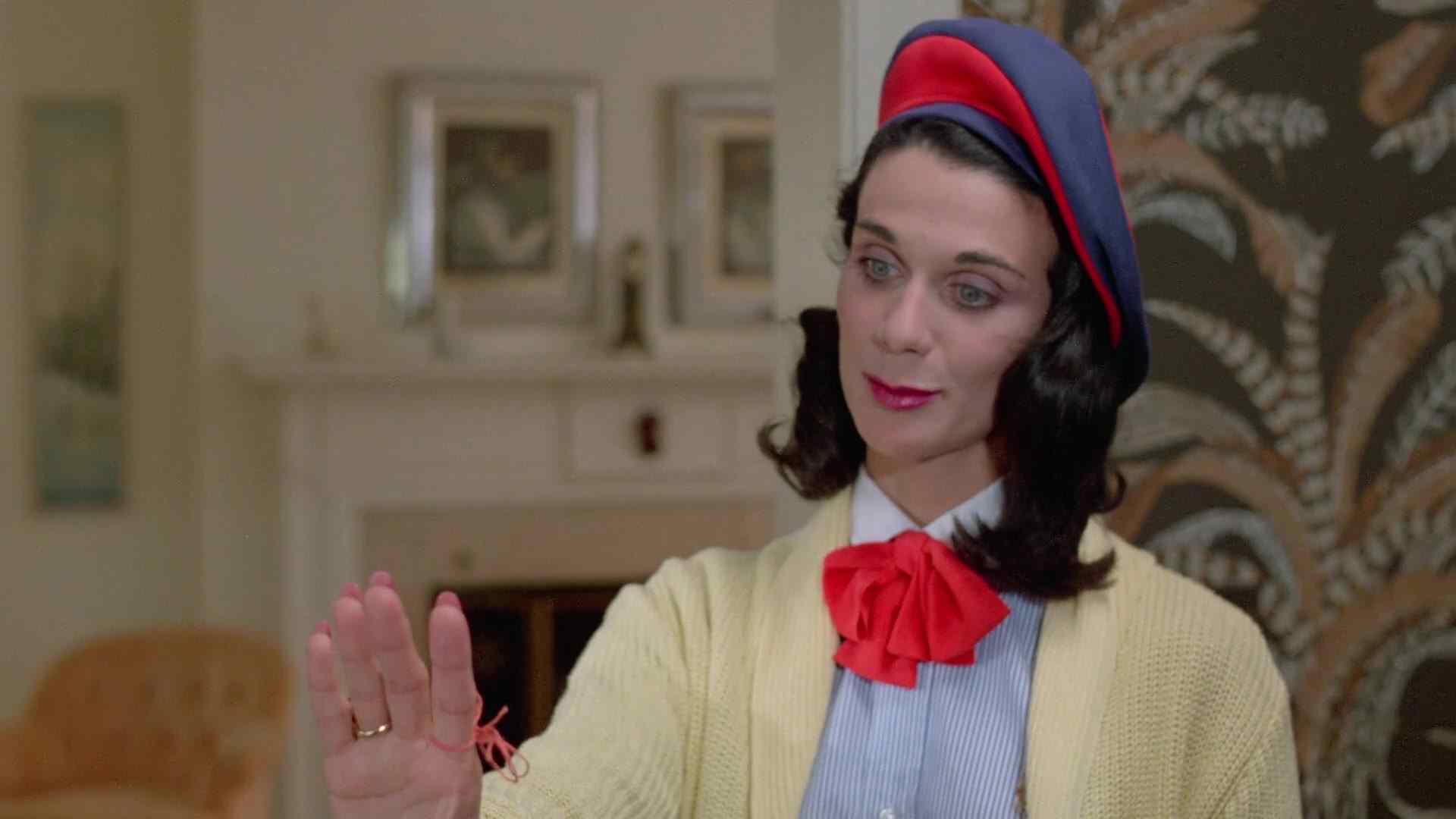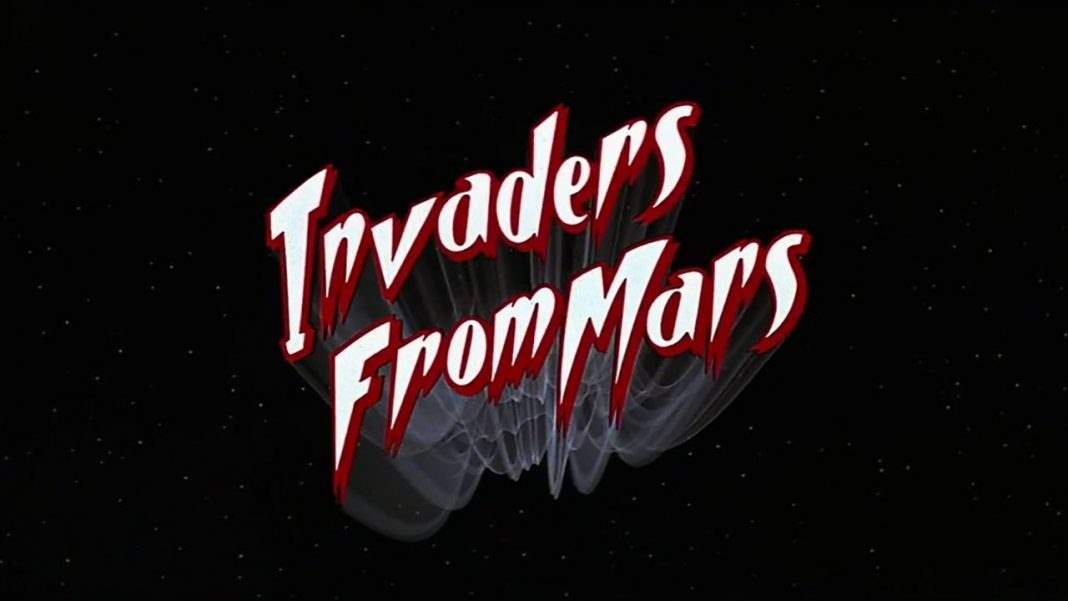I should start off this examination of the film by saying that I am not a trans individual and that this is only my understanding of both the merits and the problems of Sleepaway Camp and how it deals with its central theme, all coming from my own interpretation of the piece and the general response from the trans community, but not from my own personal experience.
Sleepaway Camp is widely known as being one of the most openly trans narratives in the general scope of horror films. It is doubly impressive to think of Sleepaway Camp as a franchise, containing five entries to date, with a trans woman as the lead. Overall, Sleepaway Camp has been embraced by the LGBT community in the years since its release. For the most part.
But there are still those that have condemned the film for being exploitation, for having nearly every scene either played for shocks or laughs, feeling that even though the movie does contain these themes it does not take them seriously.
I think, to some extent, both are right. It’s impossible not to read Sleepaway Camp as a trans film, and it does a good job as such retroactively. Going back through it knowing that Angela is a trans girl is in many ways more interesting than actually watching through the movie and arriving at that ending. Because the biggest problem with the feature is also the one scene it is most known for, and that’s the ending. The final moments of Sleepaway Camp are played entirely for shock value. That’s the part I really can’t say, “Well, you know, it was all they could do at the time.” The feature is known for its ending and that’s probably not good. It doesn’t really help people to take it seriously.
Related: Why It’s Time for Sleepaway Camp II to be Considered a Cult Classic
 Really, nothing about that ending is good. Not only do you have the dramatic “She’s a boy!” but you have that still shot that is intriguing enough for its weirdness in the way the camera lingers on Angela’s frozen face and the bizarre animal noises that accompany that. But then you pull out to see her face (by way of a plaster cast mask) on a naked man’s body and it’s really not the way they should have gone about it. Not that The Crying Game was any less over-the-top while garnering tons of critical acclaim, but the final moments of Sleepaway Camp really only work as a B-Movie climax and are pretty far from tasteful.
Really, nothing about that ending is good. Not only do you have the dramatic “She’s a boy!” but you have that still shot that is intriguing enough for its weirdness in the way the camera lingers on Angela’s frozen face and the bizarre animal noises that accompany that. But then you pull out to see her face (by way of a plaster cast mask) on a naked man’s body and it’s really not the way they should have gone about it. Not that The Crying Game was any less over-the-top while garnering tons of critical acclaim, but the final moments of Sleepaway Camp really only work as a B-Movie climax and are pretty far from tasteful.
Looking at everything leading up to that ending, though, it makes sense why there are people in the LGBT community who have embraced Sleepaway Camp. Not only is Angela not just another killer who happens to be a white male, she’s a trans female antagonist and one of the only ones in horror history. At the same time, she is the protagonist of the feature. She’s the main character. In this first film, she is a perennial outsider. Everyone hates her and most of them don’t even know why they hate her.
Even before the reveal, there are obvious clues as to Angela’s identity. Her primary bully, Judy, constantly criticizes Angela’s body when compared to her own. Angela is, after all, a preteen girl. This is a hellish time and while she seems as comfortable with her identity as she could be, she’s far from comfortable overall. She’s constantly picked on and belittled for being so underdeveloped and quiet, but these aren’t things that are going to make her any more willing to open up to her peers.
 There’s a strange empowerment to Angela as well. Most of the victims in slasher movies are picked seemingly at random. They’re, for the most part, just people who happen to be there at the time. But in Sleepaway Camp, every attack is personal. All of the victims are people who were seen crossing Angela at some point in the feature. There’s very nearly an element of rape/revenge to it as well, as Angela kills a grown man who very nearly sexually assaulted her. A grown man who is portrayed to have no redeeming qualities whatsoever and is one of the most despicable side characters in slasher history.
There’s a strange empowerment to Angela as well. Most of the victims in slasher movies are picked seemingly at random. They’re, for the most part, just people who happen to be there at the time. But in Sleepaway Camp, every attack is personal. All of the victims are people who were seen crossing Angela at some point in the feature. There’s very nearly an element of rape/revenge to it as well, as Angela kills a grown man who very nearly sexually assaulted her. A grown man who is portrayed to have no redeeming qualities whatsoever and is one of the most despicable side characters in slasher history.
Obviously, this does not mean that people who are picked on—for any reason—should go out and start killing their bullies, but that’s part of the catharsis of a movie like this. It’s just getting all of that frustration and anxiety out there on the screen in a depiction that is so over-the-top it couldn’t be mistaken for anything real. It’s just a release. And it’s an interesting character depiction, too. Angela is our main character, but also the killer and that is a tough duality for any horror film to maintain, really hard to pull off but worth it when it’s done well.
 Some may also point out the unconventional way in which Angela actually made her transition and embraced her gender identity, because it wasn’t something she arrived at on her own. It was technically chosen for her by her Aunt Martha, who did not want to raise a little boy. There’s no condoning anything Aunt Martha does, but of all the things Angela is uncomfortable with in this movie, the last thing she’s uncomfortable with is being referred to as a girl or as Angela. That’s who she is. The accident and Peter Baker all the past before she became who she is now and while they probably have some bearing on her they are not what define who she is.
Some may also point out the unconventional way in which Angela actually made her transition and embraced her gender identity, because it wasn’t something she arrived at on her own. It was technically chosen for her by her Aunt Martha, who did not want to raise a little boy. There’s no condoning anything Aunt Martha does, but of all the things Angela is uncomfortable with in this movie, the last thing she’s uncomfortable with is being referred to as a girl or as Angela. That’s who she is. The accident and Peter Baker all the past before she became who she is now and while they probably have some bearing on her they are not what define who she is.
Angela may not embrace her femininity or sexuality in general, but she is still a child, after all. Not to mention the fact that she’s also a mass murderer and her single attempt to open up to someone on that level leads to his decapitation. But this could still be construed as lashing out at someone Angela believed to have wronged her, as he had gotten close to her and liked her and then went for the girl that every other guy was attracted to the moment she showed restraint.
While Sleepaway Camp is not a perfect examination of the trans experience, it’s an important entry in the horror pantheon nonetheless and one of my favorite slashers of its era. It gets as much right as it gets wrong and was by all accounts done with the best of intentions. It’s been embraced more and more as the years have gone by, a cult film with a little more to it than the average B-Movie fare. That, if anything, proves its success.
*Updated Jul3 3, 2020







